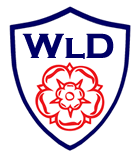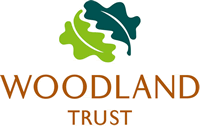Dog Kennel Wood
Dog Kennel Wood is a 4.92 hectare biological heritage site, which includes ancient woodland, spring flora including bluebells, and a central meadow area with a pond. Wildlife includes foxes, frogs, dragonflies and abundant birdlife.
Dog Kennel Wood is a semi-natural ancient woodland, which is run as a community project.
Dog Kennel Wood consists of mainly broad-leaved Woodland.
Features
- Parking nearby
- Public access
- Spring flowers
- Broadleaved woodland
| Country/Area: | North, Lancashire |
|---|---|
| OS map sheets: | Explore 286 |
| Designations: | ASNW – Ancient |
| Grid reference: | SD554273 |
| Size: | 4.92 hectares (12.16 acres) |
There is parking in the area nearby Dog Kennel Wood.
Pictures of Dog Kennel Wood
Please click the ‘Play’ button to view the album.
Dog Kennel Wood Site Description
Dog Kennel Wood Acquisition
The wood was purchased, freehold, by the Woodland Trust from private owners in 1986. The acquisition was supported by the Countryside Commission (now Countryside Agency) and South Ribble Borough Council.
Dog Kennel Wood Situation & Landscape
Dog Kennel Wood is 4.92 hectares (12.16 acres) in size. It is in two parts which originally were joined; the much larger area of Dog Kennel Wood at 4.73 hectares (11.69 acres), and a very small area now called Island Wood at 0.19ha (0.47 acres).
Dog Kennel Wood is a long, wide woodland of even-aged mixed, mature broadleaved trees and shrubs on both sides of the valley of a small stream, the Hennel Brook, which flows from south to north, in a busy, suburban area, just ½ mile south of the city of Preston. To the south is Cockshott Wood, a very similar wood that merges into Dog Kennel Wood. It is partly bounded to the west by young woodland, (some of the extensive tree planting carried out by the Commission for New Towns as Central Lancashire New Town developed in the late 1980’s), and partly by small pasture fields. These effectively buffer the wood from the A6 London Way, which runs parallel. Immediately to the east and surrounding the small fragment of Island Wood is Cinnamon Hill housing estate. To the north (where the wood is very narrow) is an area of rough grassland, and an area of mown grass then Hennel Lane.
Dog Kennel Wood Recreation
The wood is directly adjacent to the large housing estate of Cinnamon Hill in Walton-le Dale and easily accessible. Parking is available on the nearby roads, and access into the wood is on foot.
The main part of Dog Kennel Wood has a total of 5 entrances. The easiest to find is the entrance that leads south off Hennel Lane (B6230), which is a well-known road locally, linking the A6 London Way with the B6258 Chorley Road. Other entrances can be found off Marlborough Drive and Alexandra Road on the estate. The remaining 2 entrances are from adjacent land to the west. Island Wood is largely open, and can be accessed directly from Marlborough Drive and Allerton Road.
There is a network of just over 1,000m of permissive paths, most of which are well surfaced creating a variety of little walks, 5 bridges (including 3 over the Hennel Brook), and the meadow grassland. The paths also link into Cockshott Wood, London Way and the new town recreational area and a public footpath across the fields. Dog Kennel is varied and attractive, especially in spring, with a good display of flowers including bluebells, lesser celandine and wild garlic, and the stream and pond are interesting features. Public events for local people take place regularly, notably the annual bonfire and occasional summer BBQ and are very popular.
Dog Kennel Wood Landscape
The wood is very visible to all the neighbouring houses, and also from the main A6 London Way leading southwards out of Preston. The trees of Island Wood are a prominent landscape feature both to neighbours and people passing on the adjacent roads. The whole area is very well used, mainly by local people and children.
Dog Kennel Wood Community Involvement
The wood has always been well used and known locally. Shortly after it was acquired, by the Trust, local people were helped and encouraged by the Woodland Trust to form the Dog Kennel Community Woodland Group in 1987. This has the aim of involving local people in the management and care of the wood. This initially started the practical work of removing piles of rubbish, creating and surfacing footpaths, building bridges over the streams and general wardening activities. The group has been extremely successful, effective and well motivated over the many years that it has been constantly active. Additional work and skills includes tree felling (thinning), selling timber and wood, pond creation, organising bonfire nights, summer parties on site as well as dealing with the administration and running of the group and communication with locals and the Woodland Trust. They are well equipped and organised, and continue a regular programme of activities and work. On the edge of The Meadow is a metal tool shed, used by the Community Group.
Because of regular, sustained and enthusiastic local involvement, many of the problems and difficulties of managing an intensively used, small, urban wood with difficult management access have been resolved. It has been possible to implement works gradually, largely by hand, and with a constant presence and communication of local volunteers. As a result the wood is an excellent example of a well-managed urban wood, much valued by the local community.
The Long-Term Intentions for Dog Kennel Wood
For Dog Kennel Wood: the wood will be managed as mixed broadleaved, predominantly native high forest, with a mixed age structure. The wood is currently even-aged and has been very dense, so thinning work will continue, probably for many years as it is being carried out gradually. This is diversifying the age range by allowing the remaining trees to develop and regeneration to occur. It will also ensure that the remaining trees are well formed and stable, for safety reasons. Where possible in these operations, native trees will be retained and non-natives selected against, particularly sycamore, as it is so prevalent. However, it is expected that sycamore will continue to be a component of the wood, as it is already, and since is generally a stable, long-lived and relatively disease free tree. Throughout the wood, it is intended that sycamore should represent between 0-50% of the tree species, and it is anticipated that the other main species will be oak, alder, ash and cherry. Other non-native trees and shrubs will be monitored at long intervals to ensure that they are not increasing in area or frequency. Regeneration will be monitored periodically, to ensure that it continues to be sufficient. If necessary regeneration will be respaced and thinned to ensure the mix of ages and species continue.
For Island Wood: the main aim is to retain mature tree cover, and where possible and desirable develop a shrub layer. The mature trees will be retained whilst they are safe, and the next generation of trees develops. All trees should be managed to ensure that they are well formed, stable and healthy, for safety reasons. The planting or regeneration will be monitored frequently to ensure that it is sufficient to provide replacement trees and planting carried out as necessary. Wherever possible, changes should take place on a small scale and gradually, as the wood is highly visible.
Community involvement and activities in managing the site and organising events will be actively encouraged and supported, especially involving and providing for local people. Activities that are detrimental to the wood, particularly dumping of garden rubbish, other fly tipping, encroachments and pollution will be actively prevented.
Visit the Woodland Trust’s website

